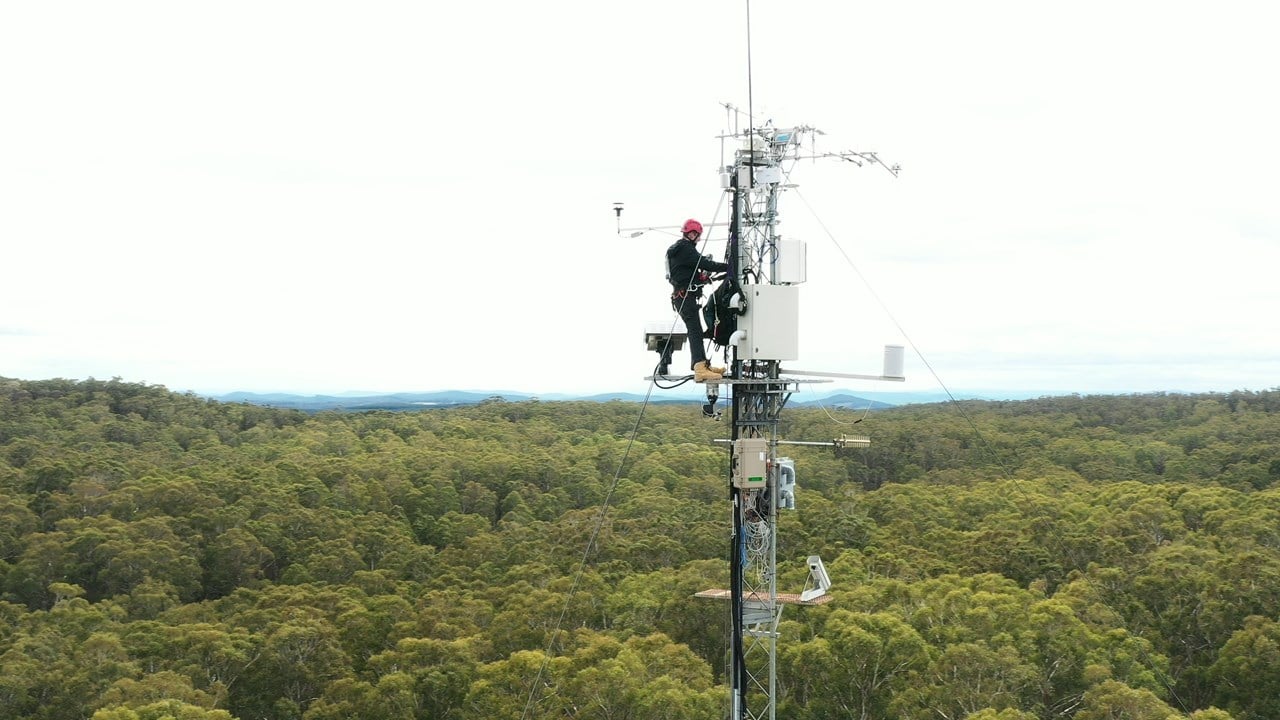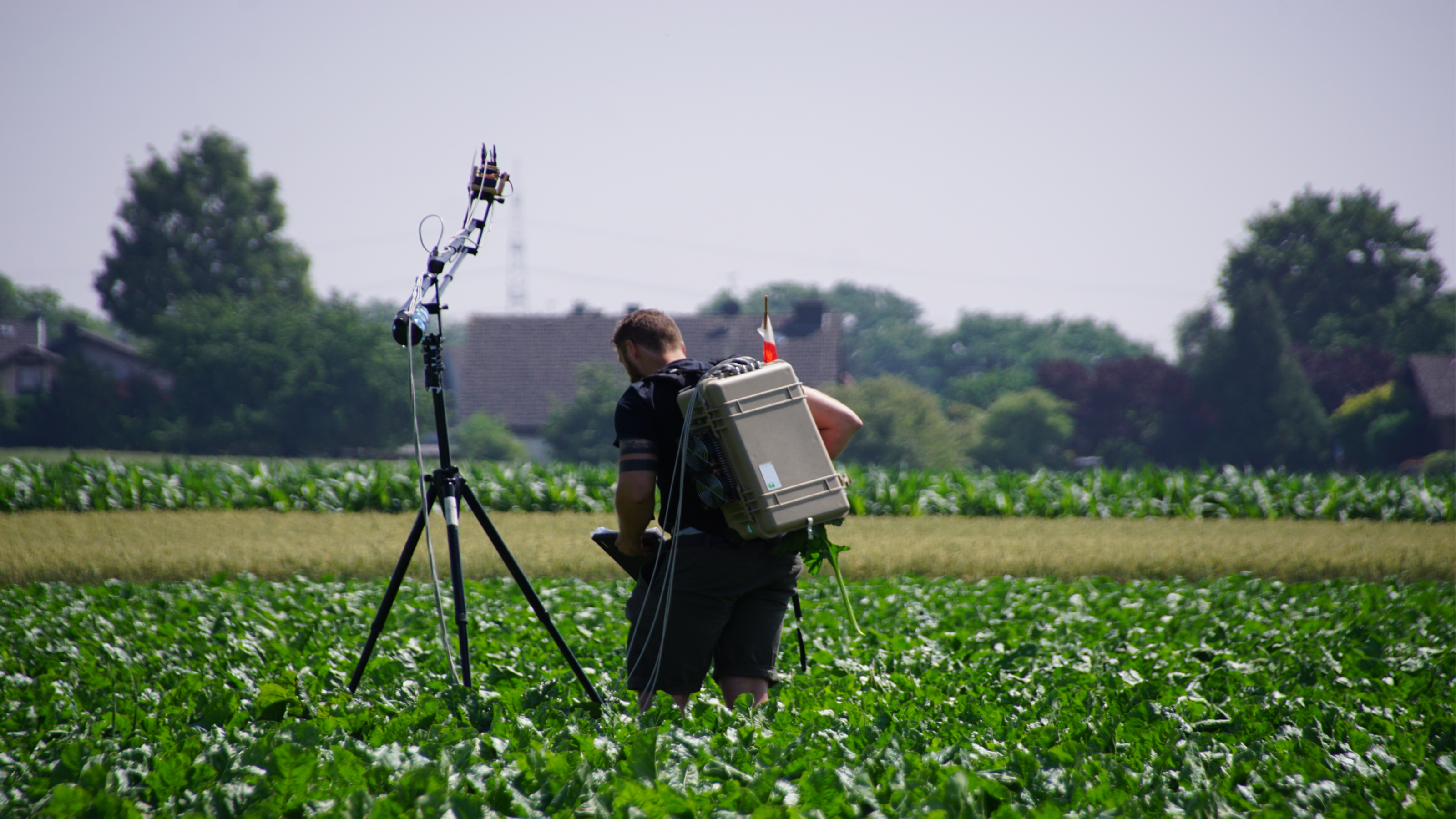Subscribe to Our Blog
Receive updates from our team as we share application notes, customer spotlights, educational tools, spectroscopy how-to’s, and more.

Andreas Burkart and Tommaso Julitta of JB Hyperspectral discuss working with Ocean Optics and how JB’s systems help researchers monitor environmental elements and climate conditions.
Based in Düsseldorf, Germany, JB Hyperspectral is a supplier of hyperspectral systems for environmental remote sensing and an Ocean Optics solutions partner. JB was founded in 2016 and is led by Dr. Andreas Burkart, a plant researcher who heads the R&D team, and Dr. Tommaso Julitta, an environmental scientist and JB’s managing director.
We first got to know Dr. Burkart in 2014, when he was a postdoctoral researcher at Germany’s Julich Research Center and winner of our “World Cup of Applications” competition, which attracted dozens of entries featuring applications using Ocean Optics spectrometers. Burkart’s winning entry focused on the challenges of distinguishing the faint chlorophyll fluorescence signal that plants emit during photosynthesis from bright sunlight, which has implications for monitoring plant health and carbon uptake.
Recently, we caught up Burkart and Tommaso to discuss their work at JB, interesting environmental monitoring applications, and how Ocean Insight spectrometers are integrated into their systems.
This interview has been edited for length and clarity.
Q: What kind of environmental sensing work do you do at JB?
JB: We are living in a changing world. To better understand how the environment is impacted, automatic devices for field measurements are a key solution. Forests, crops, freshwaters, snow, glaciers and the atmosphere are environmental elements playing a significant role in climate. Monitoring them helps us to have a comprehensive picture of natural processes and hopefully, will make us aware of the actions we need to take to preserve our planet.
Thousands of satellites are flying above us every day and many of them are looking down at Earth to monitor the environment. Having a closer look, directly on the ground, helps to investigate the environment and to discover new analytical techniques, plus to calibrate and validate the satellites’ imagery.
This is what we are doing. We make instruments for outdoor use, which are deployed in the field for years and patiently, minute by minute, gather information on how different surfaces reflect or emit light.
Q: And how are Ocean Insight spectrometers used in those instruments?
JB: We integrate Ocean spectrometers and make them operational for field use. And thanks to their [the spectrometers’] flexible configuration, we can offer products specifically designed for several applications such as analysis of the photosynthetic rate of plants, water and air quality, and snow melting processes.

Q: On a technical level, what are JB systems measuring in the field?
JB: With JB products we focus on the temporal domain of environmental processes. We use Ocean’s spectrometers with nanometric or sub-nanometric resolution to collect data over time. JB instruments have a fixed field of view and they track the evolution of the surface below.
Usually, our products collect, at the same time, sun radiance looking at the sky and the radiance reflected by the surface looking down. This allows us to get an instantaneous picture of the two light fluxes, which are later used to determine physical and chemical characteristics of the monitored target. Further, our instruments are rugged, have low power consumption, and directly collect various metadata such as temperature, humidity and GPS coordinates.
Q: Your RoX and FloX systems use Ocean Optics spectrometers. RoX is for solar radiance, reflected radiance and reflectance. FloX is designed for chlorophyll fluorescence. What sets them apart?
JB: RoX and FloX products are now making the life of scientists way easier because we take care of all the technical challenges a scientist is typically facing. Basically, we´ve gone through all the pain and obstacles to make a robust outdoor setup, so our customers don´t have to experience all the issues on their own.
Every measurement site has its own characteristics such as temperature variation during the season, low power supply, humidity, dust and so on, as in most of the outdoors world, environmental conditions are harsh. With our instruments, scientists can simply go to the field, plug the system to solar panels, switch it on, and enjoy the view. JB instruments are currently installed from the equator to the North Pole, collecting accurate radiance measurements. We are continuously supporting our customers by developing with them specific data processing to satisfy their needs, tuned for different applications.
Want to discuss your project? Contact us!
Q: Tell us a little more about the RoX system. What benefits have RoX customers enjoyed?
JB: RoX is easy to use, accurate and quick. With no automatic data collection our customer would have not been able to collect precious data sets, simply because what the RoX is doing is too demanding for a person. The flexibility of this instrument is demonstrated by the different applications it has been used for so far, from precision farming to water quality measurements of rivers in the Amazon, to detection of air quality changes during the recent pandemic lockdown. We are always happy to listen to people’s needs and support them with our technical know-how to make their measurements possible.
Q: What are some of the important applications your instruments are being used for?
JB: Light brings much information about what is surrounding us. If we look up to the sky with a spectrometer we can get information about how much energy is reaching us and, by exploiting the visible and near infrared region, we can derive the properties of air quality.
If at the same time we look at a forest, we can quantify the amount of biomass, chlorophyll and photosynthesis of the plants in that forest. This points us in the direction of better quantifying the CO2 uptake of the forest. How much CO2 is the forest taking from the atmosphere?
If we look to snow cover we can identify how the snow properties are changing. Are there any dust deposits or algal bloom on the snow? This can have a significant impact on melting rates and water availability.
Also, in agriculture applications valuable spectral information could lead to more accurate fertilization techniques with the aim of reducing waste or pollutants, or to foresee the best moment for harvesting.
Q: JB’s work sounds very interesting and important.
JB: These examples, as with many other possible applications of JB’s products, can really help us in better understanding phenomena not yet 100% clear. The knowledge we can get from this work is a benefit for all of society, which is why we are always doing our best to support new technologies.

Receive updates from our team as we share application notes, customer spotlights, educational tools, spectroscopy how-to’s, and more.